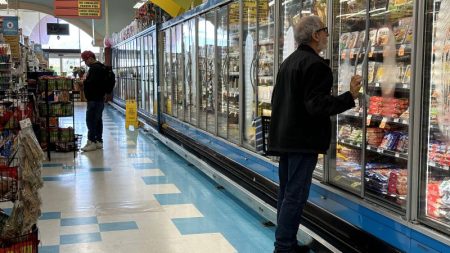US inflation is currently above the Federal Reserve’s target of 2%, although it has decreased from the 40-year high reached in 2022. Despite this, the Fed remains committed to bringing inflation down to the target rate over time. The central bank has recently revised its economic projections for growth and inflation, indicating that it expects to cut interest rates this year. While some economists see this as a sign that the Fed is more tolerant of higher inflation, Fed Chair Jerome Powell emphasized the importance of getting inflation under control, particularly for those living paycheck to paycheck.
Consumer prices rose by 2.5% in February compared to a year earlier, reflecting a slight increase from January’s data. Powell clarified that the Fed’s higher growth forecast led to an increase in inflation projections, but reiterated the central bank’s commitment to bringing inflation down to 2%. Despite acknowledging the recent bump in inflation, Powell emphasized that the Fed remains focused on achieving its target over time. He indicated that it is likely appropriate to begin dialing back policy restraint at some point this year if the economy evolves as expected.
Economist Mohamed El-Erian expressed concern about the Fed’s decision to signal a rate cut while acknowledging the potential for rising inflation. He noted the unusual situation of a central bank revising up inflation and growth projections while maintaining a dovish stance on policy. However, Lydia Boussour, a senior economist at EY-Parthenon, suggested that the Fed’s patience in achieving its goals is a sign of its willingness to embrace non-inflationary growth. She pointed to a strong economy and a more fragile demand environment as factors contributing to the Fed’s approach to inflation.
Boussour explained that the Fed is willing to look past the recent bumpy inflation data due to ongoing re-balancing in the labor market. Job growth remains solid, and there has been a rebound in labor force participation, leading to companies having less pricing power. This has contributed to a more cautious consumer spending environment, but overall, the Fed believes inflation will continue to move lower. Factors such as normalized supply-chain conditions, increased productivity growth, and a rebound in the labor supply have helped drive noninflationary growth and contributed to falling inflation.
In other news, Home Depot announced its largest acquisition ever, purchasing SRS Distribution for $18.3 billion to target professional contractors and builders. This move comes as the home fixer-upper market stalls, and Home Depot aims to expand its business by catering to housing professionals who spend more at the store. The acquisition of SRS Distribution, a building-projects supplier, will allow Home Depot to tap into a new customer base and strengthen its position in the market. Additionally, upcoming economic events include surveys on US manufacturing and service sector activity, as well as data on job openings, orders for manufactured goods, and employment reports. Fed Chair Jerome Powell is set to participate in a forum at Stanford University.















